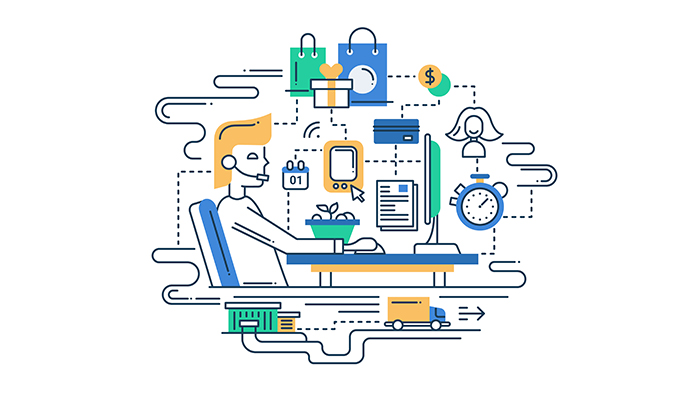
This article by Dave Borrelli is part of our Blogtober event, which features blog posts written by industry influencers in support of Breast Cancer Awareness Month.
“Sales enablement” is a term many people, especially those who aren’t in sales, aren’t familiar with. It’s “a collection of tasks and tools that are intended to improve the execution of key sales activities—activities like making sales calls, pursuing opportunities, managing major accounts, and targeting top prospects.” While Canadian companies may approach sales enablement in different ways, there’s one thing common to most of them: a burning need for more people who can make it their top priority.
Check LinkedIn or any of the popular recruitment sites and you’ll see hundreds of jobs across the country that have “sales enablement” listed somewhere in the posting. It may be in the title, the description, or in the list of qualifications. This is likely because, particularly in business-to-business (B2B) environments, sales enablement is a critical step in nurturing prospects and converting leads into buyers.
Given the fact that Canada is largely a country of small- and medium-sized businesses, sales enablement may occasionally be less a defined role for one person than a responsibility spread across a team. If you’re not sure where to get started, there are plenty of resources to help, including a few we’ve curated for you. They all point to some core, sure-fire strategies.
Sales Enablement Starts With A Strong CRM
You might expect a company like Salesforce to link CRM and sales enablement, but don’t take our word for it. According to Peter Ostrow, an analyst at the research firm Aberdeen, there is a real difference between companies that reduce or simply maintain the level of sales enablement content in their CRM system, and those he calls “CRM expanders.” Writing on his company’s blog, he shares the following statistics reported by CRM expanders:
- 52 per cent more proposals, quotes, or RFP responses delivered to customers and prospects (14.25 per sales rep, per month, versus 9.40)
- 32 per cent higher overall team attainment of sales quota (62 per cent versus 47 per cent)
- 24 per cent more sales reps achieving individual quota (56 per cent versus 45 per cent)
- 23 per cent higher lead conversion rate (33 per cent versus 27 per cent)
- 11 per cent more quotes resulting in orders (41 per cent versus 37 per cent)
When CRM is leveraged fully, its potential for contributing to sales enablement increases exponentially.

Sales Enablement Grows With The Right Skill Set
This summer, the Association for Talent Development produced The ADT World-Class Sales Competency Model, which included a look at the areas of expertise required for sales enablement. The main five included talent selection, talent development, tool and process improvement, sales coaching and sales incentive/compensations design.
“On one hand, there are sales enablement specialists (sales coaches, sales recruiters, sales compensation analysts, CRM administrators, and so forth),” Roxy Torres, manager of the ADT’s Sales Enablement Community, wrote. “On the other hand, there are sales enablement generalists, who despite dabbling more on some sales enablement areas of expertise than others, poses a general awareness of all the sales enablement areas of expertise and leverages that awareness to bring a more well-rounded approach to their role.”
In other words, encourage all members of your staff to develop areas of expertise in sales enablement that make the most sense for their jobs, their levels of experience, and the needs of the company.

Sales Enablement Thrives When Marketers Think Long Term
Even if you live and work in Canada, you can access a global range of experts by tuning into the Sales Enablement Lab podcast. A recent episode featured an interview with Forrester analyst Peter O’Neill. He suggested that in the future, sales enablement will become a job that’s integrated into all the work that’s being done by B2B marketers, whether it’s content management, demand management, channel enablement, or another job function.
The important thing, according to O’Neill, is to think of sales enablement as a strategy, not just a set of training modules. “Step back and think about the role of sales in the future,” he said. “Consider what kinds of salespeople you’re going to need against the buyer archetypes your company is looking to for its revenue growth.”
Go beyond mere segmentation and customer personas and talk to real buyers as often as possible. That will ensure that the information entered into your CRM will be accurate, relevant, and actionable for your sales team.

Like what you read? Please consider donating to the Canadian Breast Cancer Foundation and sharing this article. http://www.cbcf.org/ontario/GetInvolved/Donate/Pages/default.aspx



